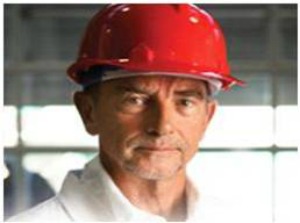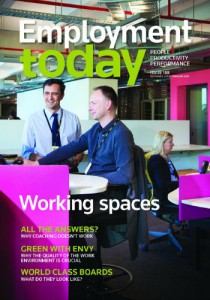Health and safety and an ageing workforce
Katherine Percy explains how to identify, manage and mitigate the increased health and safety risks associated with an ageing workforce.

Two years ago a demographic tipping point was reached in Europe where the percentage of the working age population fell for the first time in 40 years—a trend that is forecast to continue until 2060. New Zealand is following a similar path, with 44 percent of our workforce aged 55 and over, and most Kiwis expecting to remain in full-time employment past retirement age.
Ongoing skill and labour shortages combined with an ageing workforce will result in employers needing to retain older and more experienced employees in future; in many industries this is already a reality.
Employers will benefit because more mature employees tend to be better skilled, more productive, more reliable and more loyal than their younger counterparts. On the flip side, there may be skill gaps associated with evolving technologies.
The nature and extent of health and safety risks also change as people age. Younger employees are more likely to suffer alcohol or drug-related impairment, while declining physical ability, long-term health conditions and longer injury recovery times are more common amongst older people.
These age-related changes present risks to employers and employees alike, with employees aged 45 years plus being over-represented in injury statistics and comprising 81 percent of fatalities, 45 percent of new claims and 25 percent higher claims cost than for employees aged 25 and under.
Analysing the health and safety risk associated with older employees should factor in the age-related risks and mitigations for specific occupations. For example, risks associated with physical labour, working around machinery and extensive driving will be different to those associated with roles that require extensive keyboard use, working under intense pressure or making rapid decisions.
IDENTIFYING OLDER EMPLOYEES’ NEEDS
As people age, typically from about 45 years of age onwards, they experience gradual physical and mental decline such as vision impairment, hearing impairment, reduced concentration spans and more rapid fatigue. These conditions present health and safety risks because they develop slowly and employees may try and work around the impairment or not be aware of the extent of its potential impact.
Older employees are also more likely to experience chronic, long-term health conditions such as high blood pressure, diabetes and arthritis than their younger colleagues. This is particularly significant for those who jobs involve performing hazardous tasks such as driving, operating machinery, heavy lifting, working at heights, shift work and repetitive tasks.
Despite these health challenges, most older employees will be able to perform their jobs well and remain highly productive, especially if these conditions are identified and managed.
More New Zealanders are delaying their retirement and research shows that older employees’ number one concern is losing their job. This means some people may try and hide age-related and chronic health problems from their employers, or be reluctant to discuss health issues for fear it will cost them their job. Furthermore, many people consider their health concerns are private.
How employers’ engage with their workforce and the culture of the workplace will be important for positively and safely managing workforce aging.
Developing a strong health and safety culture requires an organisation to undertake a risk analysis and develop appropriate and supportive health and wellbeing programmes that are based on those findings.
EMPLOYEE ENGAGEMENT
Employees are more likely to disclose and discuss health conditions if they work in a positive culture that values their experience and demonstrably supports people to manage changes in their ability to work. Such cultures view ageing as a natural process where it is normal to manage health and age-related conditions.
Conversely, employees are unlikely to reveal or discuss their concerns if the organisational culture stigmatises or marginalises people with these conditions.
Engage employees by getting them to participate in discussions about hazards associated with job roles and how age-related risk factors can affect performance in the role. For example, hold discussions about how tiredness and fatigue experienced by all shift workers affects older employees in particular.
 Inform and support these discussions with evidence-based research and information from credible sources such as the WorkSafe website—www.worksafe.govt.nz.
Inform and support these discussions with evidence-based research and information from credible sources such as the WorkSafe website—www.worksafe.govt.nz.
The New Zealand Transport Agency provides information about the medical aspects of fitness to drive and the medical standards to be used when assessing older drivers’ renewal of commercial classes of licence. This information can be viewed at: http://www.nzta.govt.nz/resources/medical-aspects/docs/medical-aspects.pdf
HEALTH AND SAFETY MANAGEMENT AND SUPPORT
Health education programmes can help to equip employees with the necessary knowledge to manage their age-related changes and identify untreated long-term conditions so they can remain fit for work and stay safe on the job.
Practical steps for doing this range from providing information about health conditions through written materials, talks by occupational health nurses or encouraging employees to have regular health checks. For example, a panel beater might develop a programme to educate employees about managing hearing loss or reduced lung capacity, and pay for health checks associated with those conditions.
Alternatively, use a third-party health professional to provide employees with confidential health assessments and advice. Developing a reporting process that highlights common health conditions within the workforce (without identifying individuals) will help to identify priority areas for supporting safe work performance.
Older people receive less training than their younger counterparts. Some employers offer health and safety training, but fail to take older employees’ needs into account. Employers can confuse people’s experience with knowledge and skills. Although older, longer-serving employees may be experienced, that does not necessarily mean they are keeping up with technological, process and other types of change.
Employees of all ages need regular training to keep up with the skills and knowledge for safe work behaviours, new systems and industry good practice.
Although it is tempting to take a “one size fits all” approach to training, best results will be achieved if delivery takes older employees’ existing knowledge and skills into account. This is because very experienced people often baulk at being told what to do—particularly if they already know a significant portion of what is being communicated.
No matter what the training is about, employees of all ages will learn and retain more if the trainer finds out what they already know, and then builds on that knowledge.
Workplace training for all employees, including older people, should be kept relevant and simple. Give participants a maximum of three new pieces of knowledge in any one session and check that they have understood the content by asking them to describe what they have learned.
Retaining older employees and maximising their contribution may also require work activities to be customised, and job roles and duties adapted to meet individuals’ abilities. Health management can be supported by accommodating people’s specific needs through flexible hours, generous sick leave and encouraging health management activities.
Consider offering phased retirement planning, which benefits employers and employees alike by enabling older employees to contribute their valuable skills and knowledge, while at the same time reducing their hours and health and safety risk exposure. This approach also makes it easier to manage succession.
Tailored return-to-work programmes for employees who have been off work due to injury or illness will help to keep people connected with the organisation, and speed up their re-integration upon their return to work. This is particularly valuable when employees have been off work for a long time.
Managing the health and safety risks associated with an ageing workforce requires supporting an individual to continue working while ensuring they are not harmed in the process. If someone is deemed unable to work in any capacity or unfit to return to work after an illness or accident, then get advice from the EMA, an employment lawyer or HR practitioner to make sure the exiting process is managed appropriately, legally and compassionately.
Achieving good health and safety is an ongoing process, so it is important to regularly monitor and measure the organisation’s progress and take corrective action where necessary.
HOW TO GATHER INFORMATION ABOUT AN AGEING WORKFORCE’S HEALTH AND SAFETY NEEDS
The first step is to understand the potential health and safety risks affecting this group by:
- Identifying the risks and hazards associated with the job roles and tasks that are undertaken (or likely to be undertaken) by older employees.
- Identifying the extent to which the organisation is likely to depend on older employees now and in the future. Do this by ascertaining the age profiles of people in key roles who hold important institutional knowledge, or who hold roles that are likely to be affected by skill shortages and succession issues.
- Think about how significant risks and hazards will affect older employees
- Ensure incident investigations identify all contributing factors (including age related conditions) because root causes are not always immediately obvious. Analysing contributing factors over time will provide further insight about patterns of occurrence.
- Consider the specific health monitoring requirements for older employees. For example, consider offering diabetes, blood pressure and heart disease monitoring for roles such as driving that require concentration.
This information will ensure health and safety risk planning encompasses health and safety changes as employees’ age. It will also help to make implementation manageable by prioritising the greatest health and safety risks.
 Article author KATHERINE PERCY is the chief executive officer of Workbase, a not for profit trust with more than 20 years’ experience in developing adult literacy skills and helping organisations to work smarter and safer. For more information visit: www.workbase.org.nz.
Article author KATHERINE PERCY is the chief executive officer of Workbase, a not for profit trust with more than 20 years’ experience in developing adult literacy skills and helping organisations to work smarter and safer. For more information visit: www.workbase.org.nz.
Read more HR articles
This article is one of several free to browse from the HR magazine Employment Today.
 Now everything "Human Resources" is conveniently located in one hub: the magazine Employment Today, other publications and resources, information about events, suppliers, jobs …
Now everything "Human Resources" is conveniently located in one hub: the magazine Employment Today, other publications and resources, information about events, suppliers, jobs …
To find out more please visit: HR Solutions